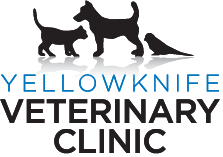Library
-
Many liquid potpourri products and essential oils, including oil of cinnamon, citrus, pennyroyal, peppermint, pine, sweet birch, tea tree (melaleuca), wintergreen, and ylang ylang, are poisonous to cats. Both ingestion and skin exposure can be toxic.
-
The estrous cycle, better known as a female cat's heat cycle, consists of several stages; the stage called estrus refers to when the female is sexually receptive. This handout explains the age of onset, the clinical signs of a cat in heat, the length and phases of the heat cycle, as well as the benefits of spaying a female before her first heat cycle.
-
Ethylene glycol, a sweet-tasting, odorless liquid, is the active ingredient in antifreeze. Ethylene glycol can also be found, in lower concentrations, in some windshield de-icing agents, hydraulic brake fluid, motor oils, solvents, paints, film processing solutions, wood stains, inks, printer cartridges. Ethylene glycol is poisonous to cats; immediate treatment is essential.
-
Open and honest communication with your veterinarian and veterinary healthcare team throughout your cat's life lays the foundation for effective communication when that cat's life begins drawing to a close. Discussion with your veterinarian will clarify any specific medical implications of your cat's disease that can serve as benchmarks to suggest that euthanasia should be considered. Most often, euthanasia is provided at the veterinary practice or in your home. The veterinary healthcare team will be an important partner as you negotiate the difficult days and decisions leading up to your cat's peaceful passing.
-
Evan’s syndrome is the term used when a pet has both immune-mediated hemolytic anemia (IMHA) and immune-mediated thrombocytopenia (ITP). With this condition, the body destroys its own red blood cells and platelets. Prognosis is variable and depends on the underlying cause and the pet’s general condition at the time of diagnosis. Relapses are common.
-
Losing weight can be difficult. While feeding a prescription weight loss diet is certainly a good start in a weight loss program for your cat, it is important to remember that food intake is only one part of the problem; energy expenditure is also significant. Encouraging your cat to exercise by playing with him, putting his food in unusual places so he has to look for it, and making him work for his food (e.g., training, foraging toys) will help.
-
Proprioception is the ability to know where your body is in space. This is what helps reduce falls and injury. Proprioception may be lost suddenly through spinal cord trauma, or it may be reduced with age, joint disease (osteoarthritis), or other orthopedic or neurologic disease. Some specific controlled exercises that can improve proprioception are discussed. Any exercise plan needs to be formulated by a veterinary rehabilitation therapist to avoid injury.
-
Obesity occurs when a cat consumes more calories than they expend. Therefore, managing obesity in cats often requires both dietary changes and increased exercise/activity. There are several methods for increasing activity in cats, including play, using cat trees and climbing structures, outdoor enclosures, and intentional, active feeding practices. Each of these can be beneficial in promoting weight loss.
-
All glues containing isocyanate and diisocyanate can expand. Pets exposed to a very small amount of wet or liquid expanding glue may consume enough product to be problematic. Foreign body obstruction due to a mass of expanded glue in the stomach is the most common outcome in dogs ingesting expanding wood glues. After abdominal X-rays confirm the presence of a glue mass and obstruction, surgery is required to remove the mass, or endoscopy in mild cases. The prognosis for recovery from expanding glue ingestion depends on the removal of the mass.
-
Extracorporeal shockwave Therapy (ESWT) is a treatment that uses high energy sound waves to exert changes in the target tissues. In specific situations it can decrease pain and increase healing. Conditions that can be treated, types of shockwave therapy, contraindications and adverse effects are discussed.

